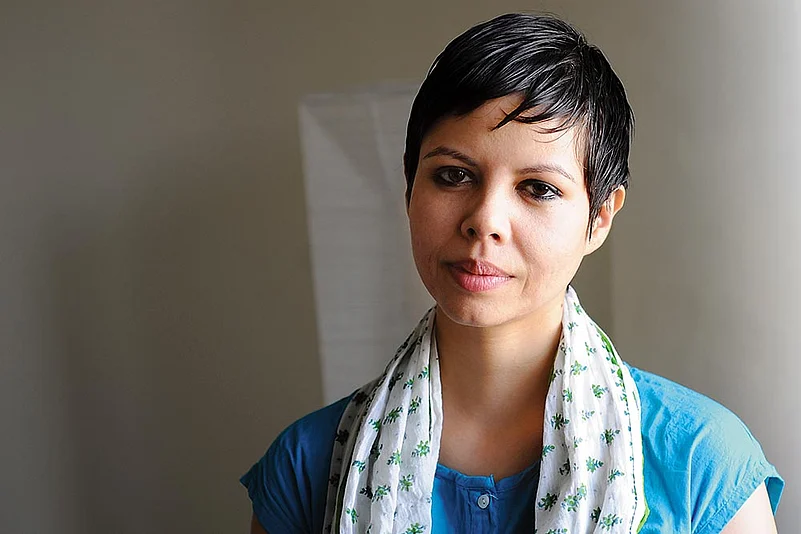A lissom girl with beech tree limbs flows in and out of time frames, remote and mysterious and beautiful as a tree in the sunlight is. She is glimpsed here, seen there and gone without explanation. The Nine-Chambered Heart is Pariat’s balancing act, a Rashomon viewpoint from those who surround her heroine through fragmented ways of seeing that together create some collective truth.
An anonymous group of people, one by one, charts the growth of a girl to woman, from a city without a river to a city with a river across two continents. There are not even nine people—there are eight of them with labels like The Saint, The Lighthouse Keeper, The Caretaker, The Florist, titles which evolve from some aspect of their lives in relation to the woman. The Butcher has two sections devoted to his appearances and disappearances, and he does in some sense hack through the woman’s heart. Some kinds of literary erotica use names like these for their protagonists, so do allegories—though given the sexuality in the book, perhaps erotica would be a better comparison.
There are never any names of the type we know mentioned in this delicate balancing act of anonymity; it glides over second and third persons. No one calls each other anything even in the most intimate moments, except for a sudden ‘habibi’ from the only other woman in the story.
If you flip through the pages, it sometimes seems like a guessing game, because the lack of names and sense of places leave you disorientated. The chapters flow through corridors and deserted apartments with sudden blocks of colour, a pink and green cathedral, the green eyes of a cat, a red and black painting of tiger crouching like love. One half recognises places, retreats and walks down corridors, catching fleeting glimpses of those one half knew. You know the city with a river is London, because of the Pound (currency) and because the name comes in later. For the rest—she comes from a small town in the east of her home country, which again remains nameless, though we guess, again, that it is in India. It may even be in the hills of Meghalaya, like Pariat’s. There are no giveaway words, no telltale details, of artefacts or clothes.
What the men look like we never know and as for her, we see her through the eyes of others, sometimes filling the canvas, sometimes shrinking. Once she is marked by her knobby knees and once by her coltish gawky legs, though these are terms of endearment from a woman who has lost her lover and is unsure of sexual certainties.
Anonymity allows the book to be comprehensible, no matter where in the world the reader happens to be based. Which is presumably why Pariat chose this approach. Certain things repeat themselves, like the cats, two of which are sick in two different episodes, and in one of them the girl flits away like a cat herself once the felines are gone. The more things change the more they seem the same—a girl who reads Bonjour Tristesse would agree with that.
Pariat draws out the girl’s coming of age as she changes from a reserved schoolgirl unwilling to commit herself to art or be part of the drawing class who discovers her metier for origami through the gentle understanding of an art teacher to a polished writer whose lifestyle takes her through relationships. Somewhere, she who has no name regrets that she cannot do a personal thing like write a novel instead of archiving work for a publishing house. Then, from being an awkwardly beautiful outsider she suddenly fits almost too neatly into the streamlined world of international educational agencies with publishing divisions that allow her to flit between continents and piece together a marriage which is there and gone in a chapter. For an edgy girl who confesses losing her virginity to a stool at the age of nine, this appears slightly too conventional.
The Nine-Chambered Heart is evocatively written—that goes without saying—but it leaves questions that linger. The girl has parents; the woman is in contact with them and even stays with them along with her brief lighthouse keeper husband, but why they left her with her grandparents when she was in school remains a mystery. No dark secret comes to light. What was the wish she made by stringing up the thousand origami cranes? If it was to become a writer in a city without a river, that ultimately seems far too little for a world that has witnessed the scattered lives and relationships of too many writers.
















